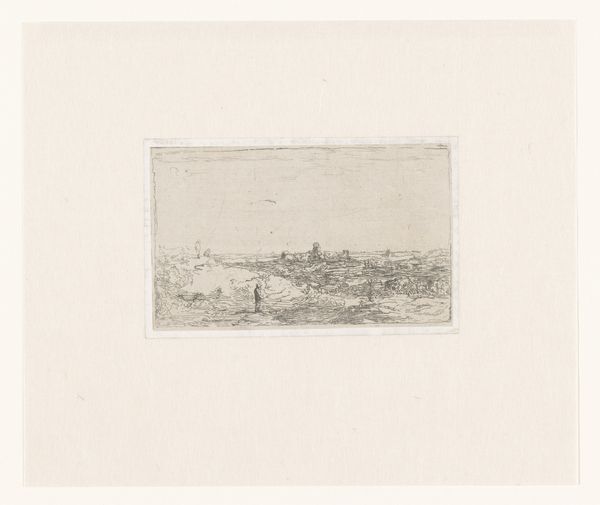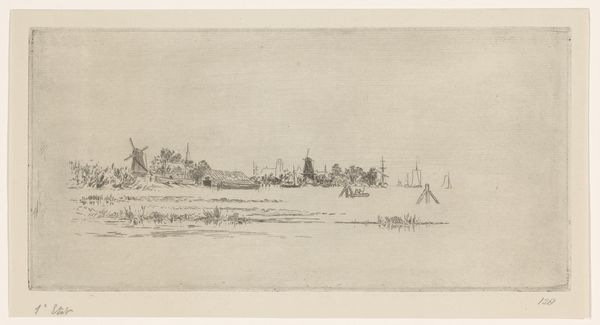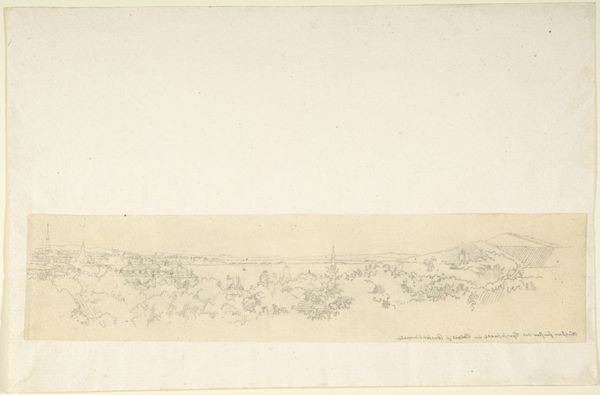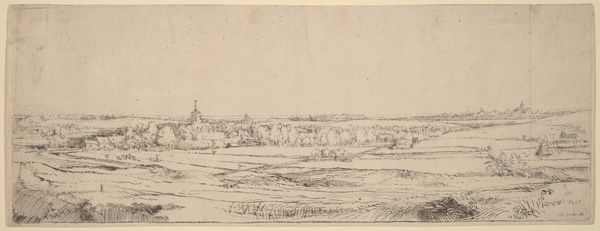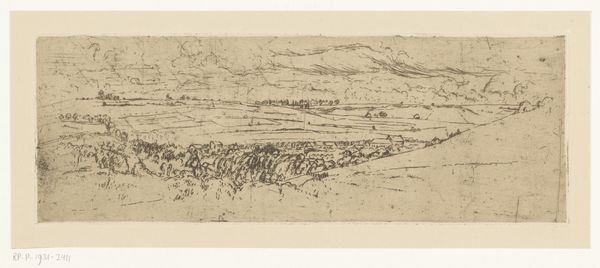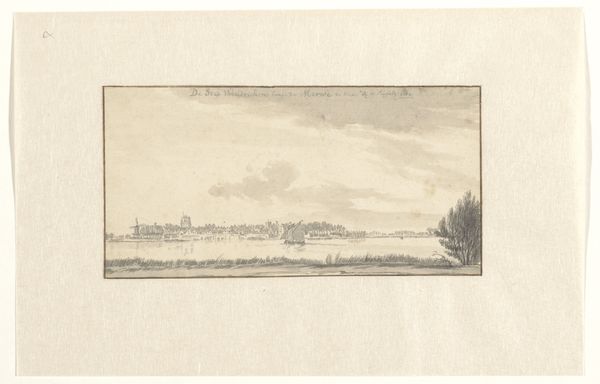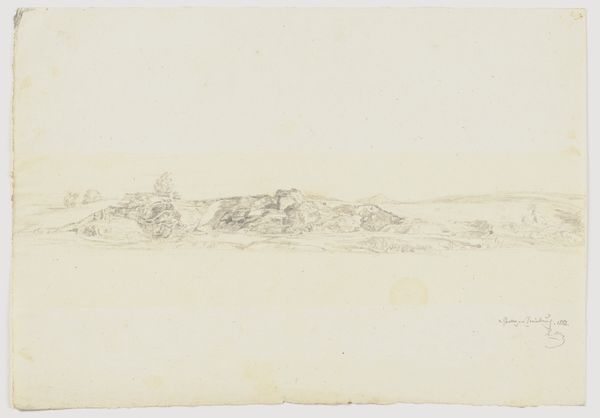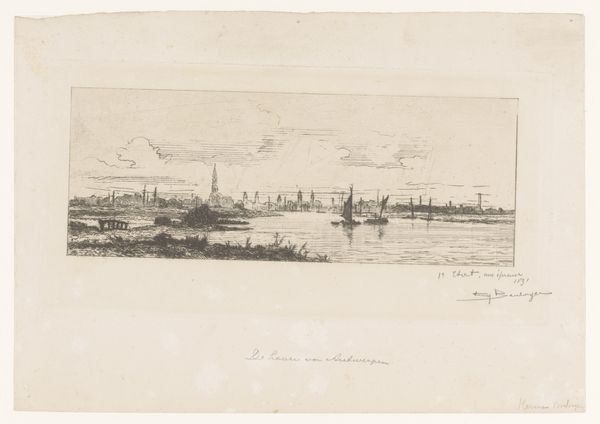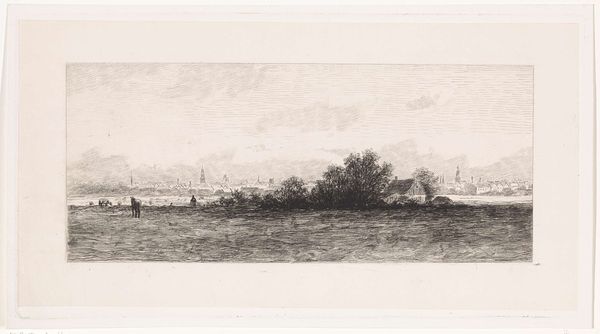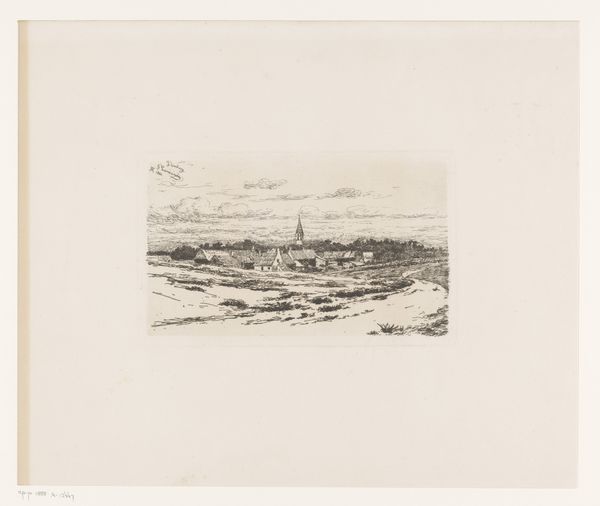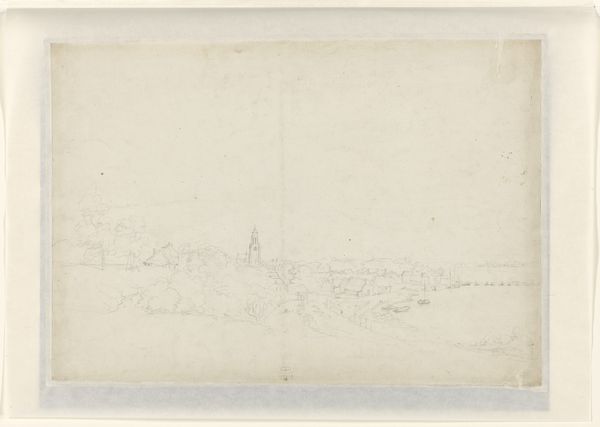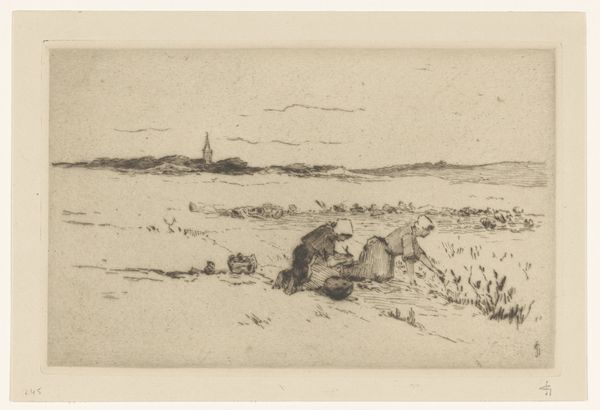
#
light pencil work
#
pencil sketch
#
old engraving style
#
etching
#
personal sketchbook
#
ink drawing experimentation
#
pen-ink sketch
#
ink colored
#
sketchbook drawing
#
pencil work
Dimensions: height 80 mm, width 236 mm
Copyright: Rijks Museum: Open Domain
Editor: Here we have Ernest Haskell's "Heldere ochtend," created in 1924. It looks like a delicate etching. I’m immediately struck by the quiet, almost melancholic, mood of the landscape. What stands out to you about this work? Curator: Well, immediately I think about the historical context of 1924. Post World War I, there's a sense of recovery, but also loss and questioning. Haskell's choice of such a tranquil, seemingly untouched landscape, executed with the starkness of etching, might be a commentary on what was lost and what remains. What do you think the absence of human figures contributes to this reading? Editor: That's interesting. The emptiness certainly amplifies the feeling of solitude, but perhaps also a sense of resilience in nature itself. It's almost like the landscape is bearing witness. Curator: Precisely. And consider Haskell’s identity as a white male artist during this period. Who gets to claim ownership, or even access, to these seemingly untouched spaces? How does that inform our understanding of the "melancholic mood" you perceived? Editor: It makes me think about land ownership, resource control… and who benefits from these idealized depictions of nature. Was Haskell intentionally critiquing that, or perhaps just oblivious? Curator: That ambiguity is key. His personal intention is less important than the conversation the work can provoke now. It can allow us to address not just environmental concerns, but also historical injustices embedded in landscape art. Do you find the style itself reinforces or contradicts this idea? Editor: I think the simplicity of the etching—the lack of romantic embellishment—keeps it grounded. It resists becoming overly sentimental, which gives the socio-political reading more weight, perhaps? I wouldn’t have seen that initially! Curator: Exactly. By bringing contemporary theoretical frameworks, such as postcolonial studies, to bear, we reveal these latent but incredibly relevant interpretations, making a 1924 landscape resonate profoundly today. Editor: I’m definitely seeing landscape art in a new, much more complex light. Thank you!
Comments
No comments
Be the first to comment and join the conversation on the ultimate creative platform.
